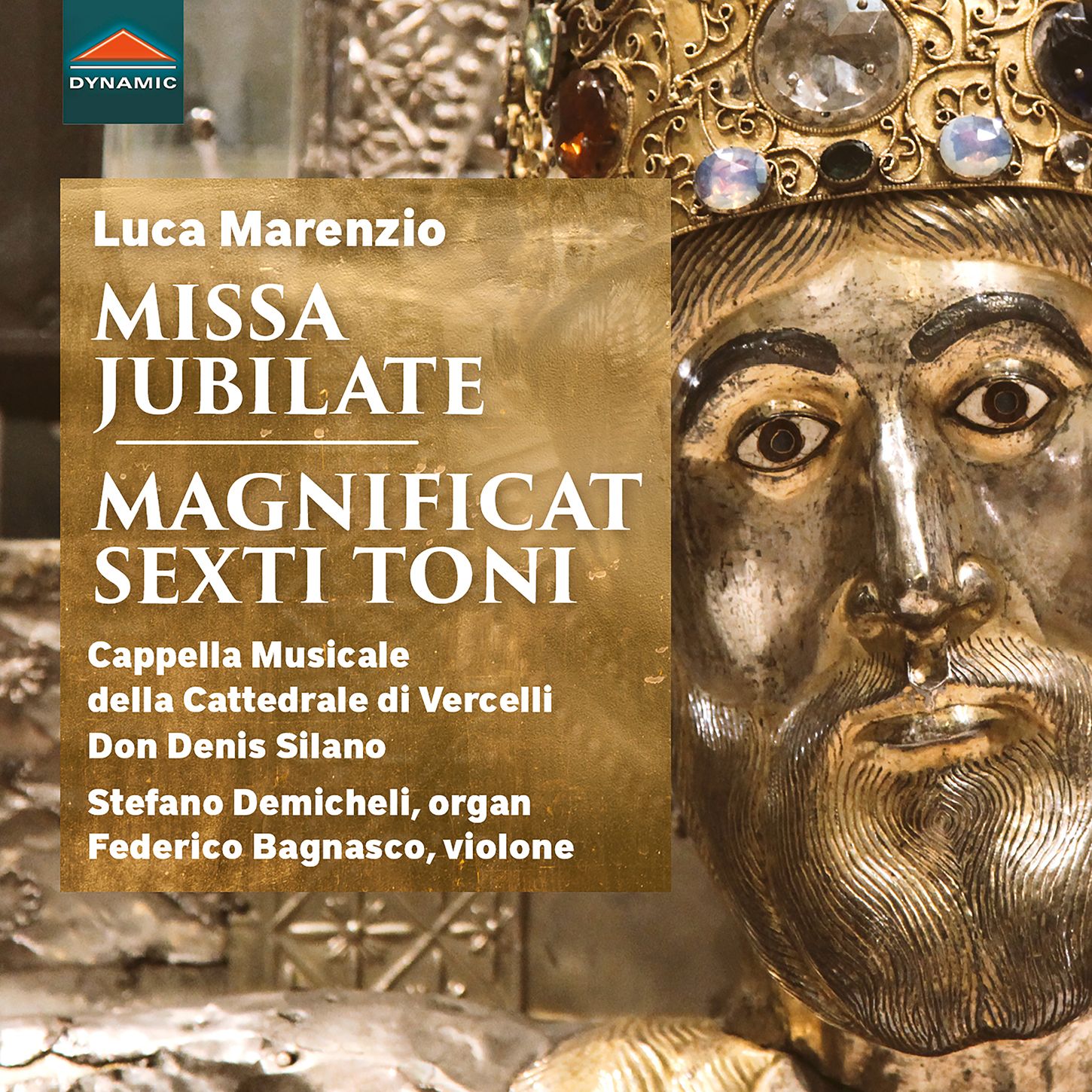Luca Marenzio: Missa Jubilate +
The new Dynamic release is significant in so many respects ...

There are four World premiere recordings on this jewel of a disc of music by Luca Maernzio (1553-1599), one of the great composers of the Renaissance. Here on Classical Explorer, we previously reviewed a fine disc of Marenzio’s first book of madrigals, on the Glossa label. Nice to be able to extend that to this disc, a release both beautiful and significant - as it contains no fewer than three World premiere recordings. This excerpt from the promotional material for the release explains:
Complex research in the manuscripts of the Vercelli archives has led to the attribution of known and unknown works to Luca Marenzio, one of the great masters of the late Renaissance in Italy. These works, recorded for the first time here, share a common thread: the composer’s activity in Rome and Poland. Missa Jubilate, a parody mass, is one of the most sumptuous creations of its time and a masterpiece of melodic invention whilst Magnificat sexti toni exemplifies Marenzio’s sophisticated use of echo effects. Both versions of Magnificat octavi toni and Jubilate Deo are also premiere recordings. On this recording, Don Denis Silano leads La Cappella Musicale della Cattedrale di Vercelli
Better still, here is Don Denis Silano in a subtitled YouTube video (he speaks in Italian) explaining the background - the video includes photos of the discovered manuscripts:
The disc is bookended by two versions of Jubilate Deo (à 8). The first (the "B" version, the older of the two and therefore presented first) probably dates from the end of the 1570s and the beginning of the 1580s - the choir acts as one:
Version "A," which ends the disc, uses antiphonal techniques - the choir is split into two groups, spatially separated, which gives Marenzio the opportunity to pass themes between the two groups, to use imitation, to enhance the work (try listening to the Spotify link below on a good pair of headphones to see what I mean).
The Missa Jubilate (a 8) was known previously, from another manuscript in Trento; this is from another copy, found in the music collection of Vercelli’s Archivio Capitolare. There is a richness to Marenzio’s writing that is spellbinding. This writing needs a performance that can at once maintain this richness while allowing the individual lines to speak (antiphonal writing is present, but here subtle). Here's the Kyrie:
For me, it is the restrained glow of the Gloria that is so special. No blaze of glory; instead a sense of holy celebration via ever-enriching counterpoint with the occasional moment of relative stasis. Listen out for some deliciously unexpected twists of harmony, too. This performance really is beautiful; plus, the acoustic of the Cappella del Seminario Arcivescovile, Italy, is beautifully caught by the Dynamic engineering.
At over ten minutes, the Credo is the longest movement, divided clearly into sections, within which is the most amazingly florid and imaginative writing. The clarity of the performance ensures Marenzio’s contrapuntal mastery shines through clearly. Note the subtle underpinning of the “Et resurrexit” by organ:
The Sanctus is radiant and rich, forming a fine contrast to the more threadbare opening of the concluding Agnus Dei. Here they are, next to each other for convenience:
Two Magnificats follow. The Magnificat Sexti Toni is also found in the Vercelli manuscript, and is for the same forces as the Missa Jubilate. There is a sophistication of utterance here that suggests perhaps the text was particularly special to Marenzio:
Marenzio's other setting of the Magnificat exists in two versions (again, for eight voices), and both shorter and extended versions are included here. There is an outflowing of counterpoint that seems an expression of purest love. Here is the shorter version (click on the Spotify link below for the longer):
Sandwiched in between the two Magnificat settings is Christe Jesu Benigne (Baci soavi e cari). This is a contrafactum. The link is to the brief Wikipedia definition, but Don Denis Silano explains in more detail, and in particular reference to this piece, in his booklet notes:
The practice of contrafacta, that is to say the spiritual disguise of madrigals by famous com- posers with sacred texts of free production, was very common in the 1500s and 1600s, in particular in the Milan of Cardinal Borromeo. Among the most exploited authors, for this practice, the name of Marenzio is often mentioned. The contrafactum of the manuscript ms. 1987 of Vercelli’s Archivio Capitolare, entitled “Christe Jesu benigne,” for six voices and organ, has not yet been recognised or mentioned in any specific catalogue. The new text is used on the music of the famous madrigal “Baci soavi e cari,” one of Marenzio’s most beloved and meaningful, published in Venice in 1591 by Angelo Gardano in “Il quinto libro de madrigali a sei voci”.
This really is the most delicious piece:
... and you can hear what Silano means in his explicatory text by comparing that to the madrigal, performed here (at a quicker tempo, which makes sense for a secular madrigal against a sacred work) by La Compagnia del Madrigale, on the Glossa label (I've put an Amazon link below):
The new Dynamic release is significant in so many respects. The premiere recordings of the Missa Jubilate, the Magnificat Sexti Toni, Christe Jesu Benigne and the 'A' version of the Jubilate Deo would be enough by themselves; but the standard of performance and recording elevates this to a disc of the utmost importance.
